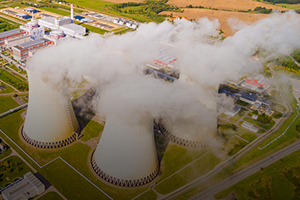Laser-Driven Fusion Reactor

For decades, scientists have been looking to the nuclear fusion reactor as the ultimate source of efficient, limitless power. Unlike nuclear fission reactors that generate large amounts of radiation and radioactive waste, fusion is cleaner, safer, and more efficient. But it has also been more elusive.
Much of the recent research on fusion reactors has focused on heating two types of hydrogen (deuterium and tritium) to extremely high temperatures (100 million degrees Kelvin) and, under extreme pressures, forcing the individual atoms together to generate energy. The problem is that it requires a tremendous amount of energy to initiate, sustain, and control such reactions, and they last for only fractions of a second.
Now, a new technology is being proposed that uses an advanced laser to ignite a fusion reaction between hydrogen and boron (B-11) inside a metal sphere. The reaction generates helium atoms with no electrons (alpha particles). These positively charged particles are trapped inside the sphere, where they can be converted directly into electricity. A second laser serves to increase the reaction yield by establishing a magnetic containment field.
Tests have shown that this laser-triggered reaction can produce reaction rates up to a billion times higher than the researchers predicted. The method uses fuels that are abundant in nature and produces no radioactive by-products. It also doesn’t require the high temperatures that traditional approaches do. In the long run, the hydrogen-boron reactor could be the ultimate answer to sustainable, abundant power.
For information: HB11 Energy; Web site: https://www.hb11.energy/